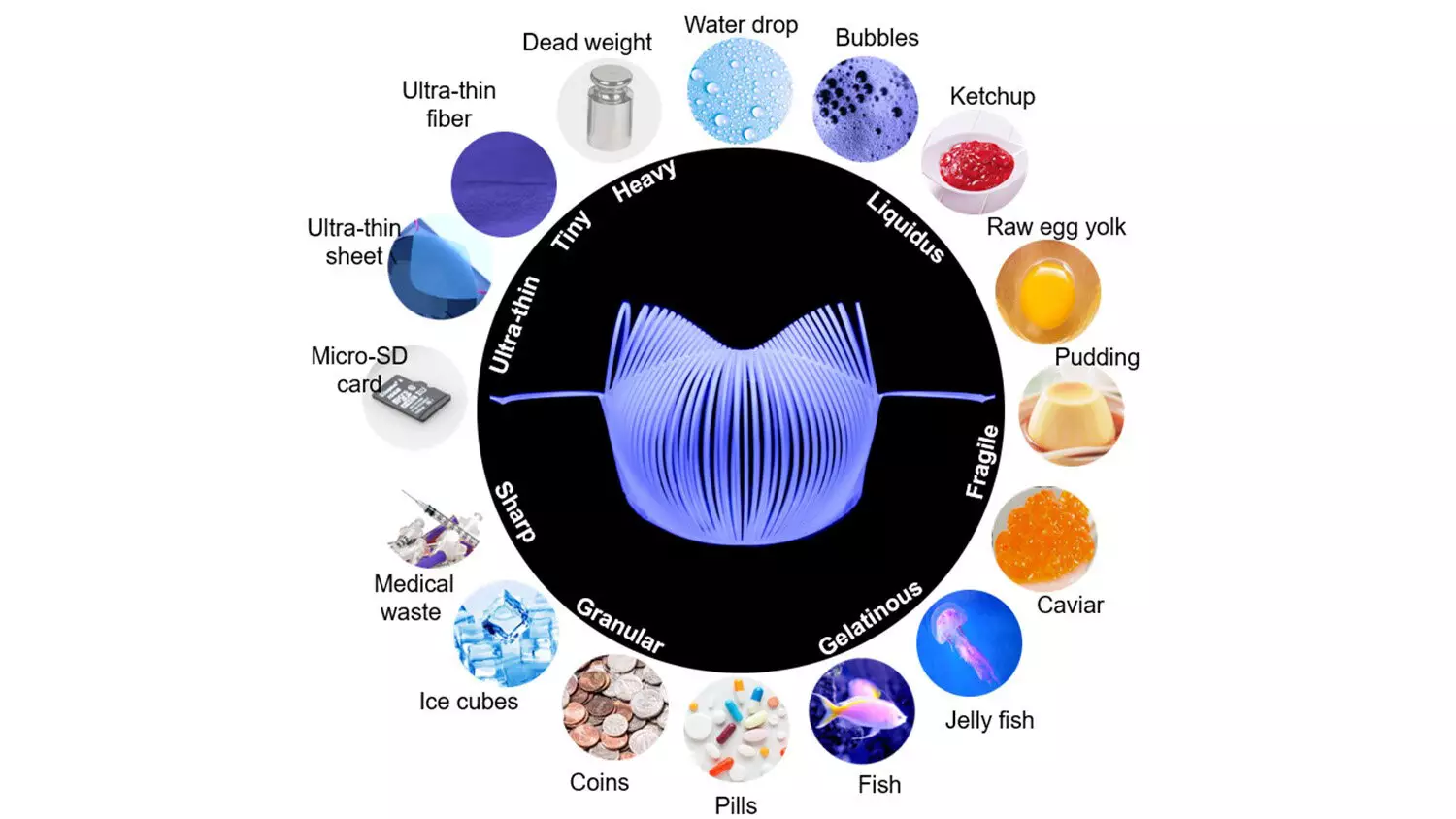In the ever-advancing field of robotics, researchers at North Carolina State University have made significant strides in developing a revolutionary gripping device. This new robotic gripper possesses a wide range of capabilities, such as delicately grasping a drop of water, hoisting a weighty object weighing 6.4 kilograms, deftly folding a cloth, and picking up microfilms that are 20 times thinner than a human hair. Not only does this creation hold promise for various manufacturing applications, but it also boasts integration potential with robotic prosthetics, demonstrating its adaptability and usefulness in assisting individuals with impairments.
The successful development of this state-of-the-art gripper is no small feat. According to Jie Yin, corresponding author of the paper and an associate professor of mechanical and aerospace engineering at NC State, it is notoriously challenging to construct a single gripper capable of handling objects of greatly differing properties. The tradeoffs between strength, precision, and gentleness often hinder the creation process. However, Yin and the team managed to strike a remarkable balance among these characteristics when designing the new gripper.
Building upon an earlier generation of flexible, robotic grippers, the researchers incorporated the art of kirigami into the new design. Kirigami, akin to origami, involves cutting and folding two-dimensional sheets of material to create intricate three-dimensional shapes. While the new grippers draw from this concept, they differ significantly from their predecessors. Yaoye Hong, co-author of the paper and a recent Ph.D. graduate from NC State, emphasizes the substantial improvements made in both the fundamental structure and the trajectory of the grippers. These enhancements refer to how the grippers approach and engage with objects when gripping them.
An exceptional feature of the new gripper lies in its ability to distribute force evenly throughout its structure. This characteristic allows it to achieve remarkable strength while maintaining gentleness. Yin elucidates that the strength of robotic grippers is often measured by the payload-to-weight ratio. Remarkably, the researchers’ grippers, weighing a mere 0.4 grams, can lift objects weighing up to 6.4 kilograms. This impressive ratio of approximately 16,000 far surpasses the previous record of 6,400. Combined with its gentleness and precision, these grippers can find a multitude of applications.
Another notable advantage of this technology is that its attractive features primarily stem from its structural design rather than the materials used. Hong suggests that these grippers could be fabricated using biodegradable materials, such as robust plant leaves. This aspect could prove invaluable in situations where the grippers are only required for a limited period, such as handling food or biomedical materials. For instance, the researchers successfully demonstrated that the grippers can handle sharp medical waste, including needles.
In addition to its manufacturing applications, the gripping device has been successfully integrated with a myoelectric prosthetic hand. This integration means that the prosthesis can be controlled using muscle activity. Helen Huang, co-author of the paper and Jackson Family Distinguished Professor, highlights the enhanced functionality that the gripper provides for tasks that are typically challenging with existing prosthetic devices, such as zipping certain types of zippers and picking up small objects like coins. Although the new gripper cannot entirely replace the functions of existing prosthetic hands, it can effectively supplement those functions. The kirigami grippers offer the added benefit of compatibility with the existing motors used in robotic prosthetics, eliminating the need for costly replacements or augmentations.
Through proof-of-concept testing, the researchers demonstrated the gripper’s versatility by using it in conjunction with the myoelectric prosthesis to turn book pages and pluck grapes off a vine. These successful tests open the doors to a wide array of potential applications, ranging from robotic prosthetics and food processing to pharmaceutical and electronics manufacturing. Yin expresses enthusiasm about collaboration with industry partners to explore the countless possibilities of this groundbreaking technology.
The groundbreaking robotic gripping device developed by researchers at North Carolina State University presents a quantum leap in the field of robotics. With its ability to handle delicate, heavy, and ultra-thin objects, this gripper showcases an unparalleled balance of strength, precision, and gentleness. Additionally, its integration potential with robotic prosthetics and compatibility with existing motors further expands its capabilities. By leveraging the advantages of its structural design, this technology also offers the opportunity for sustainable applications using environmentally friendly materials. As the researchers continue to push the boundaries of what is possible, industry partners eagerly anticipate the development of practical applications that will revolutionize various sectors.


Leave a Reply